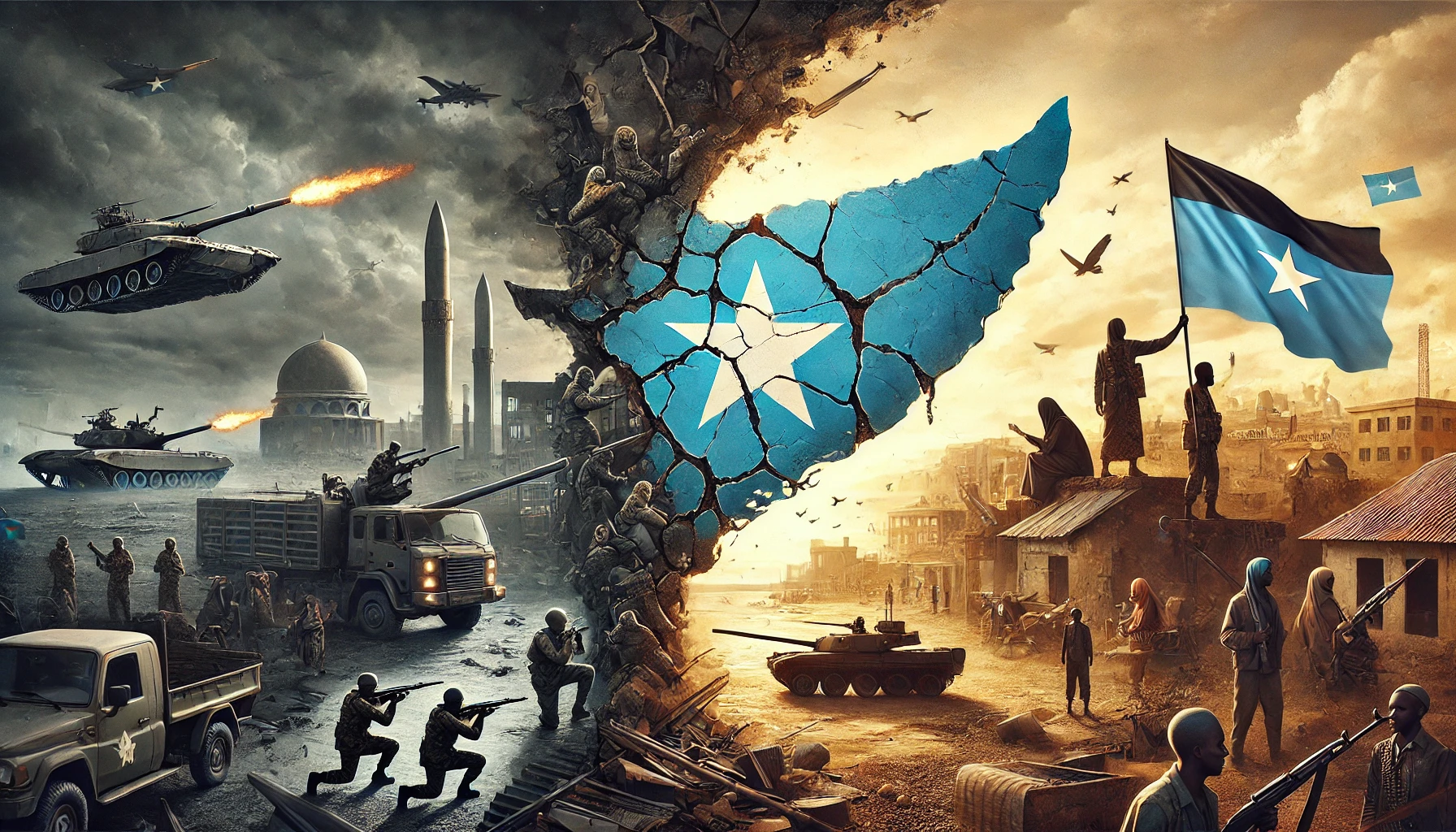SOMALIA — Amid the vast landscapes of Somalia, a nation marked by resilience and rich cultural heritage, conflicts—both large and small—continue to shape the lives of its people. From the sprawling battlegrounds controlled by militant groups to the localized disputes over resources, the intricate web of conflicts presents cautionary tales that underscore the fragility of peace in the Horn of Africa.
The Resurgence of Al-Shabaab
One of the most significant threats to stability in Somalia is the enduring presence of Al-Shabaab. Despite international efforts to dismantle the group, Al-Shabaab has demonstrated a remarkable ability to regroup and adapt. In recent months, the militant outfit has intensified its attacks in urban centers like Mogadishu and smaller towns, targeting government institutions, security forces, and civilian populations.
Local communities bear the brunt of these attacks, with civilians often caught in the crossfire. The group’s tactics have evolved, incorporating guerrilla warfare and leveraging local grievances to recruit members. This resurgence not only destabilizes regions but also hampers humanitarian efforts, making it difficult for aid organizations to reach those in need.
Clan-Based Conflicts and Resource Scarcity
Beyond the overarching threat of militant groups, Somalia grapples with clan-based conflicts that are deeply rooted in historical rivalries and competition for resources. Water scarcity, land disputes, and access to grazing areas for livestock frequently ignite tensions between clans, leading to violent clashes that disrupt local economies and displace thousands.
In the southern regions, for instance, prolonged droughts have exacerbated competition for scarce water sources. Clans that traditionally coexist peacefully find themselves at odds, turning neighbor against neighbor in a struggle for survival. These conflicts not only cause immediate suffering but also hinder long-term development, as trust between communities erodes and collaborative efforts become nearly impossible.
Urban Violence and Political Instability
The capital city, Mogadishu, epitomizes the complexities of Somalia’s conflicts. While strides have been made towards rebuilding and governance, political instability remains a significant hurdle. Power struggles within the federal government and allegations of corruption undermine public confidence and fuel unrest.
Urban violence often spills over from political disputes, with protest movements occasionally clashing with security forces. The lack of robust institutions to mediate conflicts exacerbates tensions, leading to cycles of violence that are difficult to break. The international community’s support, while crucial, is often perceived as insufficient or misaligned with the needs of local populations, further complicating peace-building efforts.
Impact on Humanitarian Efforts and Development
The persistent state of conflict severely impacts humanitarian initiatives and development projects. Aid workers face security challenges that limit their ability to deliver essential services, such as healthcare, education, and food assistance. The instability deters investment and impedes infrastructure development, trapping communities in a cycle of poverty and vulnerability.
Children are particularly affected, with many growing up in environments devoid of safety and stability. Educational opportunities are scarce, and the psychological toll of living amidst violence leaves lasting scars on the younger generation. Efforts to provide psychosocial support and educational programs are hampered by the very conflicts they aim to alleviate.
A Path Forward: Building Sustainable Peace
Addressing Somalia’s multifaceted conflicts requires a comprehensive and nuanced approach. Strengthening governance structures, promoting inclusive dialogue among clans, and enhancing security capabilities are essential steps towards achieving lasting peace. Moreover, empowering local communities to take ownership of peace-building initiatives can foster resilience and reduce reliance on external interventions.
International support must be coupled with a deep understanding of Somalia’s unique socio-political landscape. Collaborative efforts that prioritize sustainable development, respect for local traditions, and the protection of human rights are vital for transforming cautionary tales into stories of triumph and harmony.
As Somalia navigates its path forward, the lessons learned from both large-scale and localized conflicts can inform strategies that not only address the symptoms but also the underlying causes of instability. By fostering unity, ensuring equitable resource distribution, and upholding the rule of law, Somalia can aspire to a future where peace prevails over conflict, and prosperity replaces hardship.


Comment